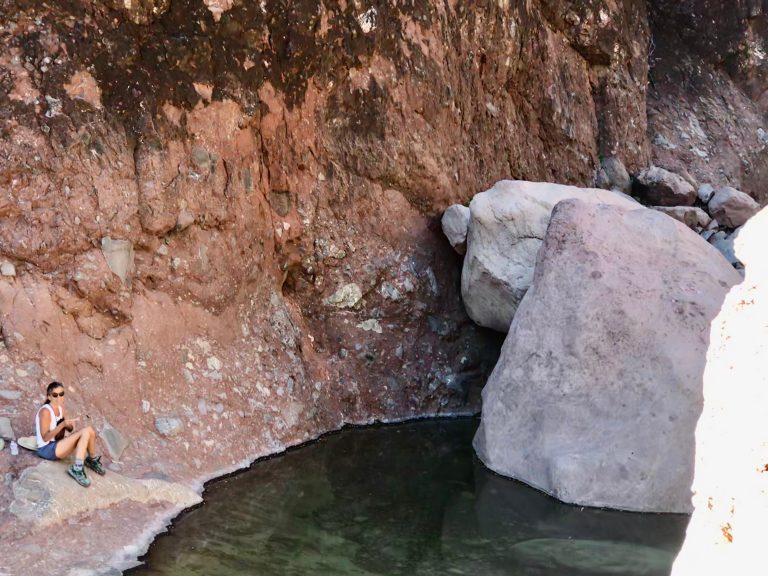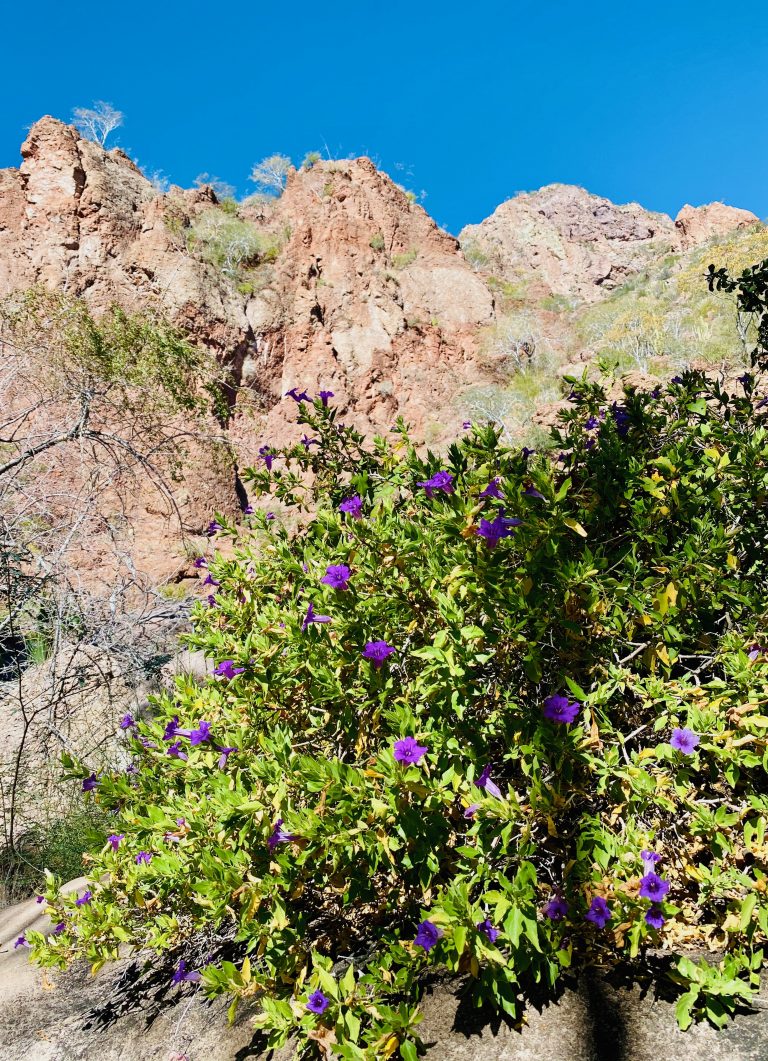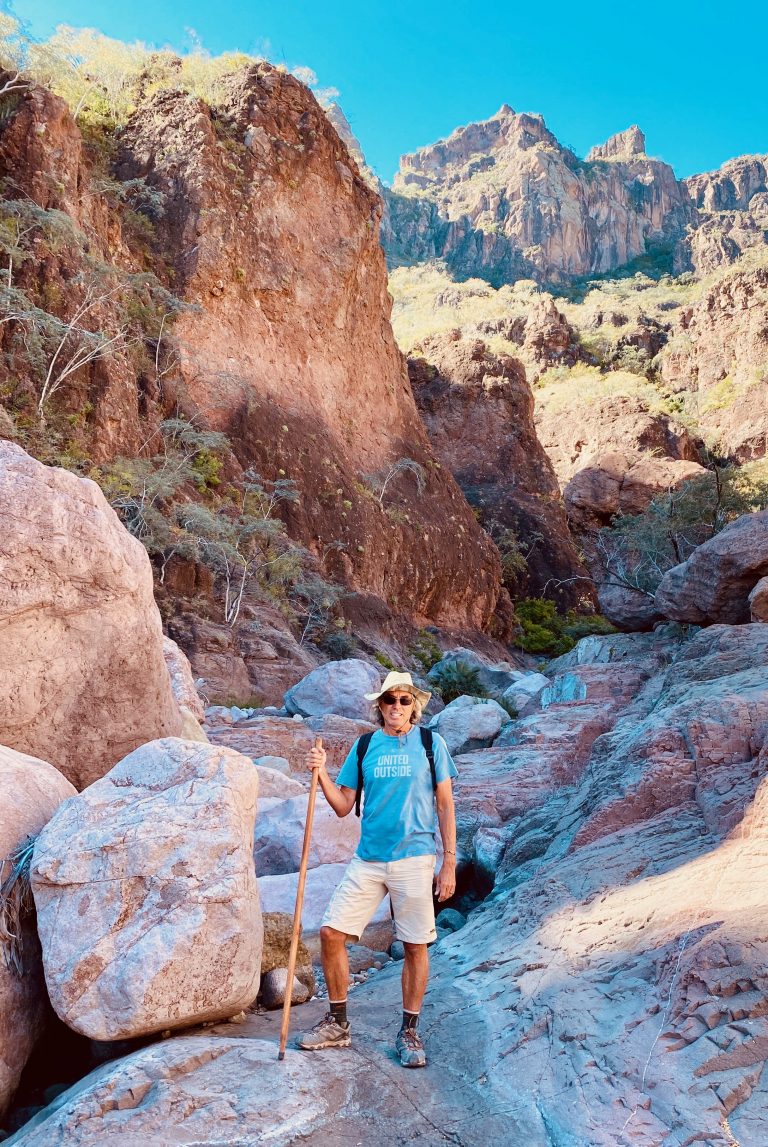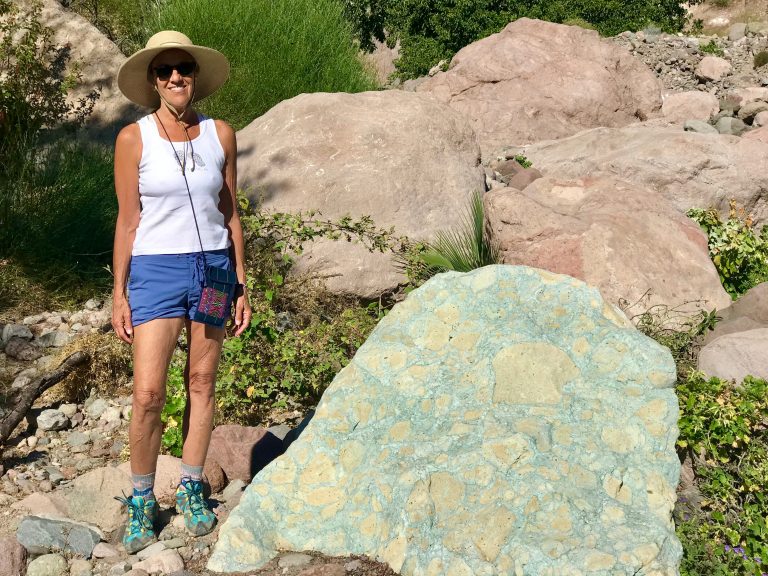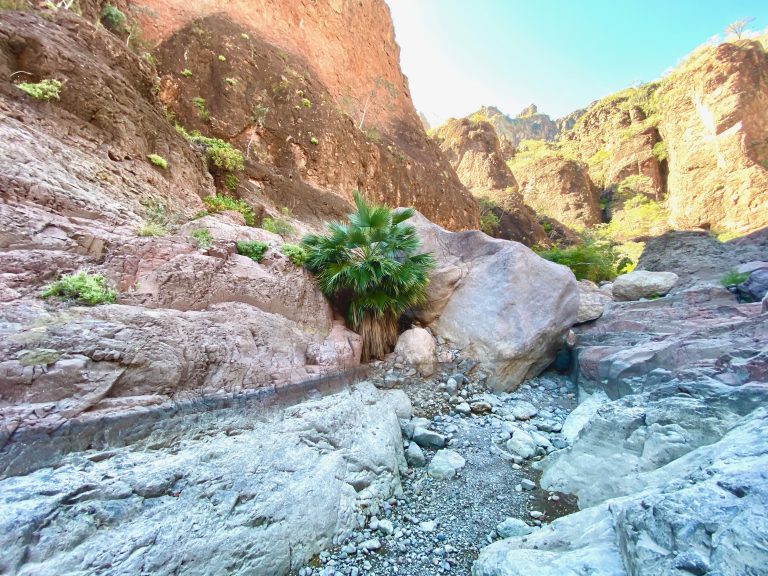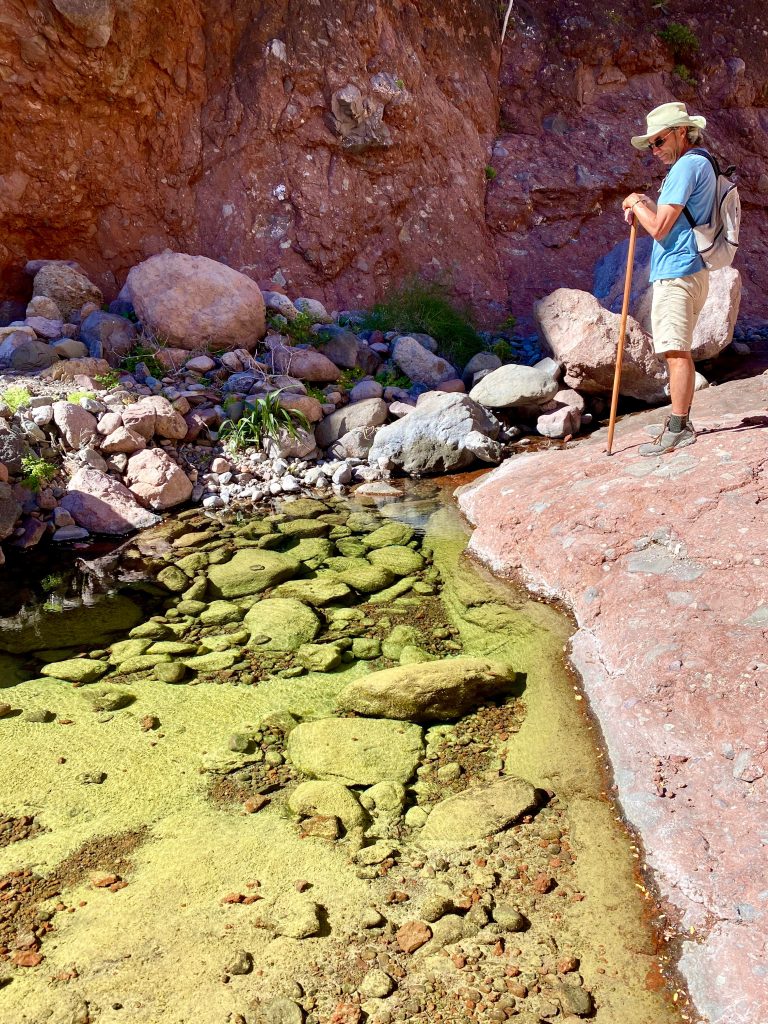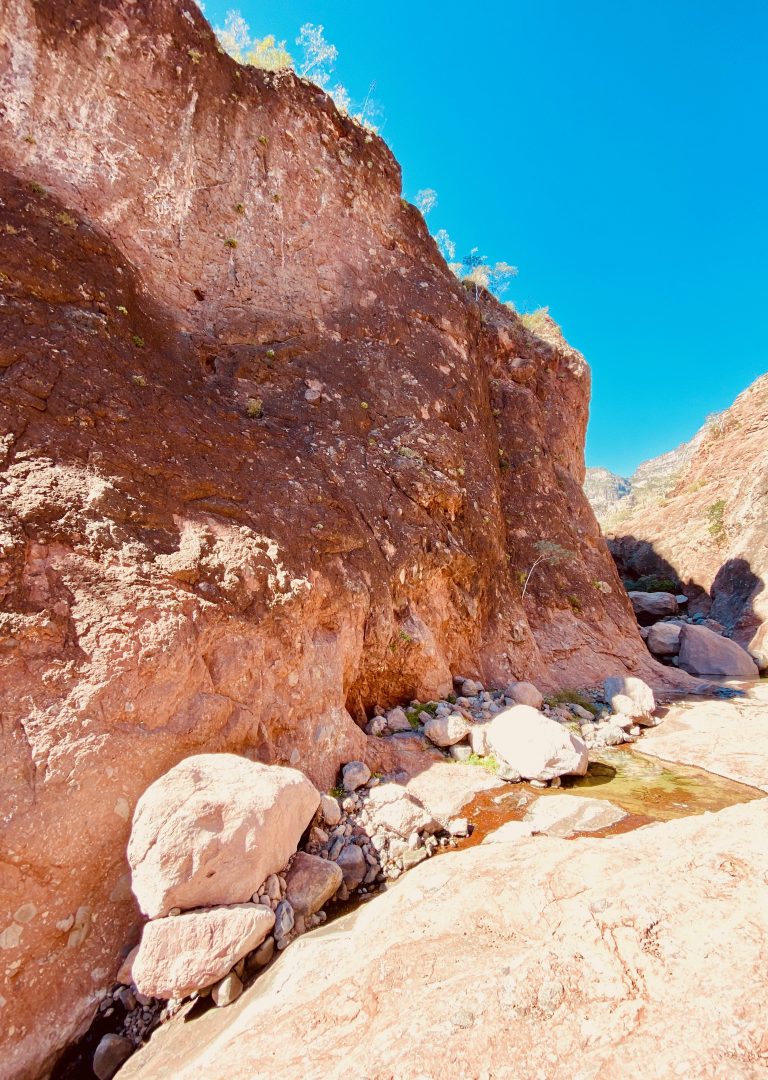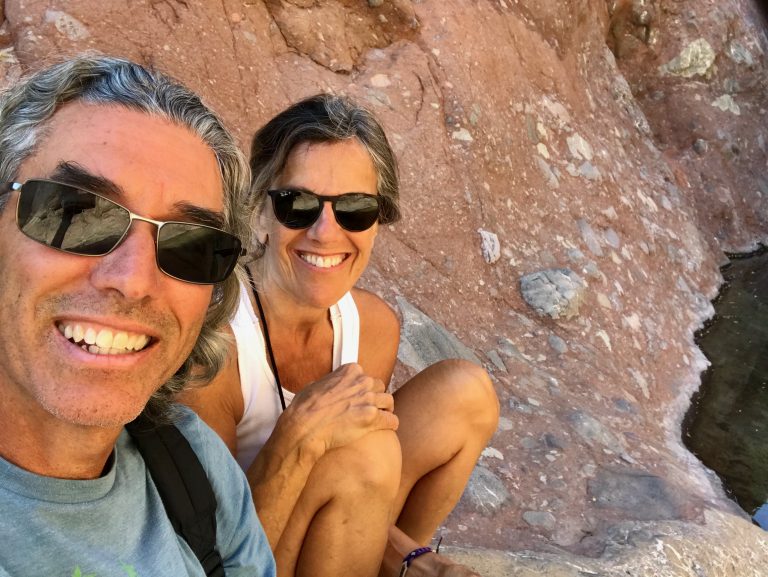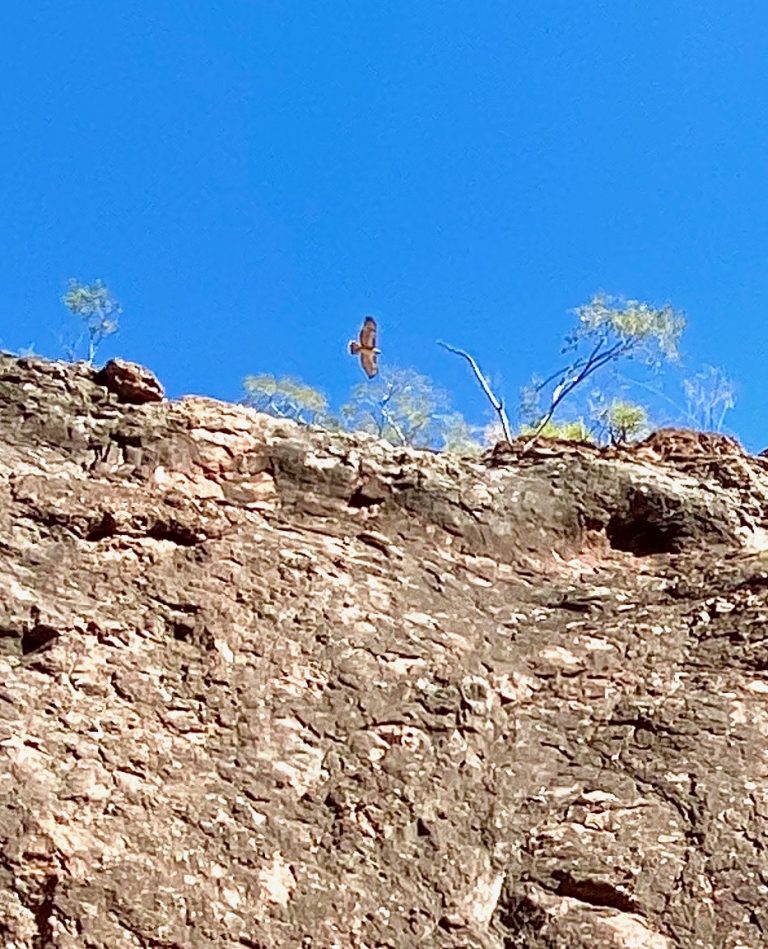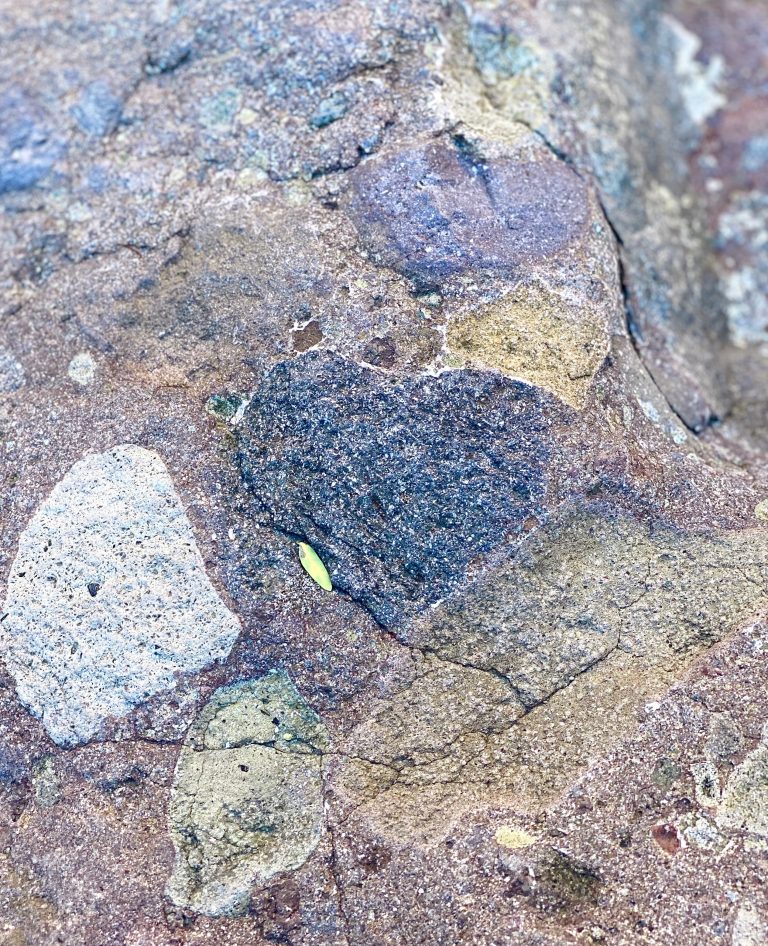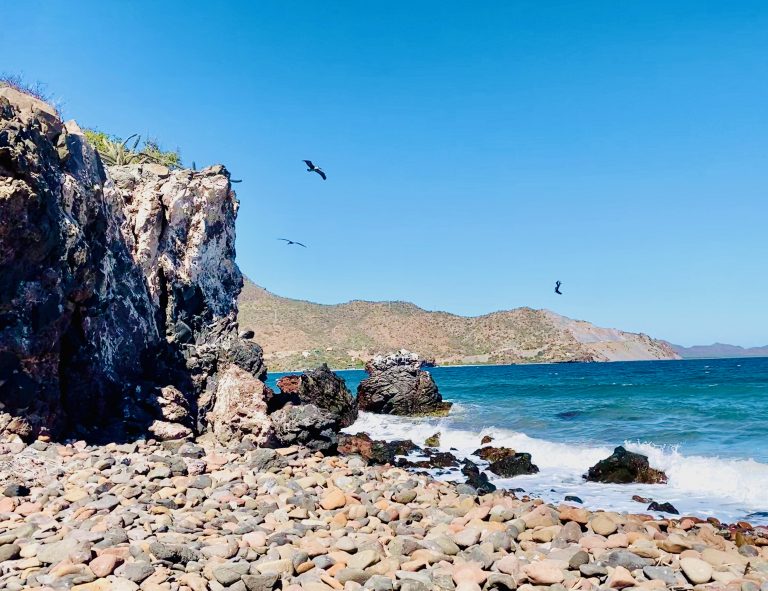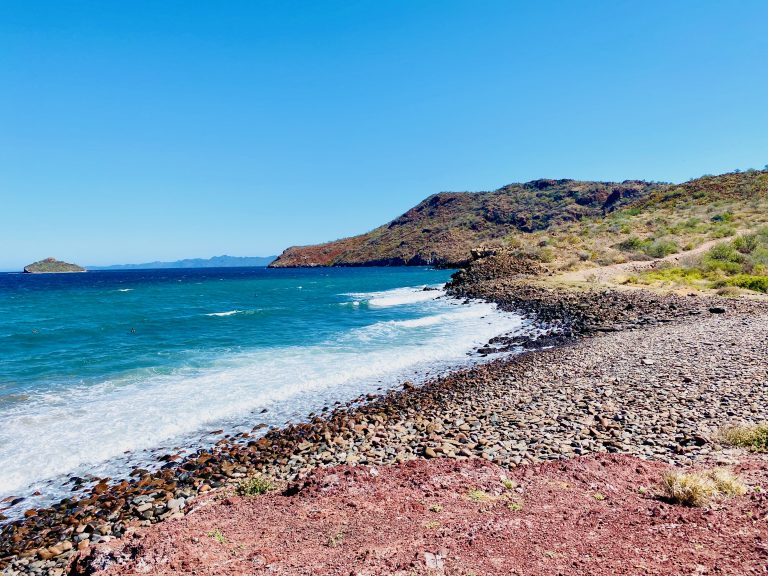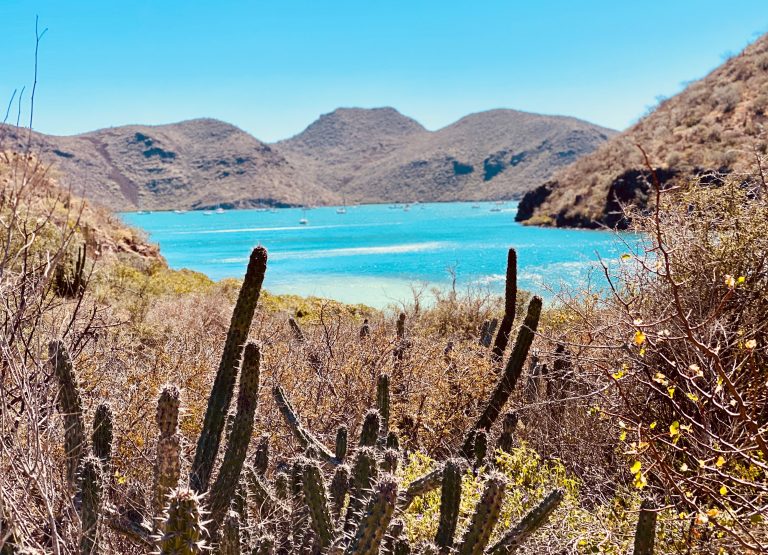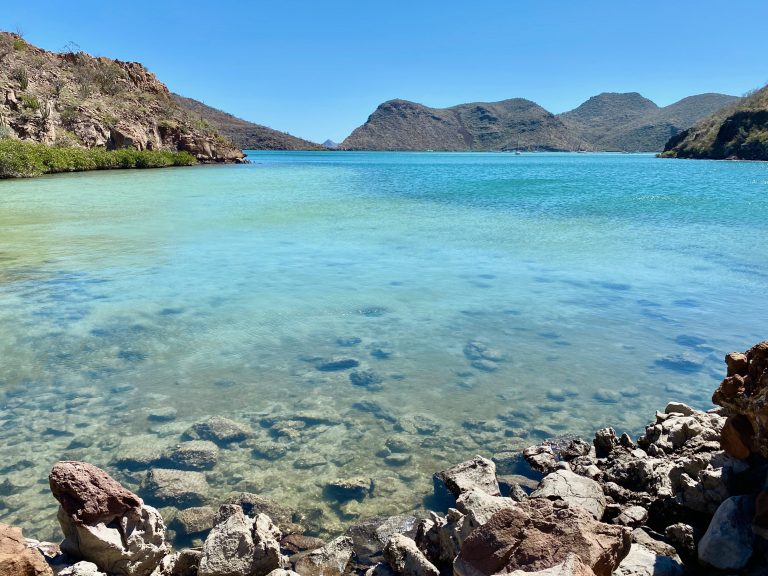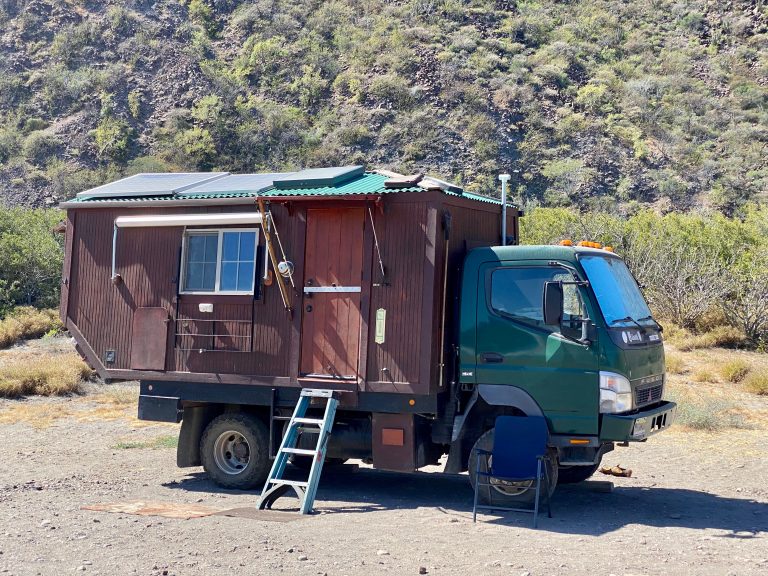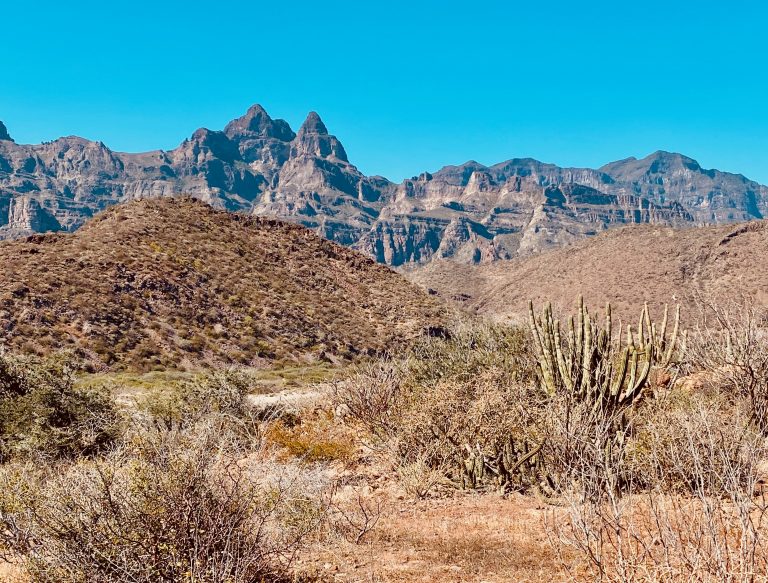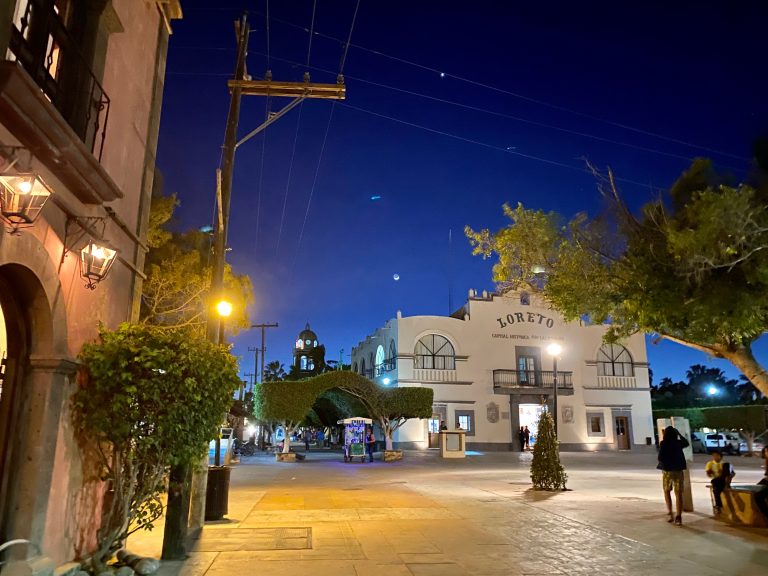February 25, 2020
Again we woke to the swooshing of swaying palms brushing across the truck. The forecast was for even higher winds with gusts to 40 mph. After a breakfast of leftover nachos, beans and guacamole, we temporarily left our campground for a 25-minute drive south to a rugged canyon for a hike. A sweet young couple from Connecticut camping adjacent to us in a teardrop camper were there for several weeks of hiking and enjoying local restaurants, and they had told us of their favorite hike to a different place, but it required getting shoes wet going through a slot canyon and I didn’t have the proper footwear (next time I’ll bring water shoes too). So we opted instead for a well-known hike Susan found at Tabor canyon that would require some significant rock scrambling.
It felt good to be on the road again, even if only for a few minutes. And I’m constantly impressed with what the truck can do. In this case, whisking us comfortably down the paved highway, then on a mile-long rough dirt road with deep gullies that ended at the mouth of a canyon. Much work had been done to shore up the mouth, with rocks wrapped in fencing and concrete work – obviously a lot of erosion happened here when the rains came. But today, it was 78 and sunny with nothing but blue skies – and the wind.
Tabor canyon is a boulder-choked runoff for the heavy rains from the occasional tropical storm. Most of the time it’s a bone-dry cactus-strewn arroyo that cut into the mountain, but everywhere was evidence of massive flooding. The boulders themselves were rounded and sat haphazard where the mighty waters sent them during some terrific deluge. It was here that we hiked, picking our way through the dusty rocks that gave way to car and house-sized boulders.
Some were glorious light-blue metamorphic rocks that stood out among the typical gray, light brown and orange-tinted ones. There was no trail, and in fact we were told that only a licensed guide can take tourists up the canyon. But this being Mexico, we ignored that part (as did everyone else) and were pretty sure that was just the local tour companies wanting more tourist money. As we scrambled and wound our way among the rocks, the canyon led up and around until there was no evidence of the mouth.
Soon, the boulders were more numerous and the climbing became harder, as we picked our way carefully, ever higher. Suddenly, we heard the unmistakable sound of trickling water and rounded a bend to see a pool full of cool clear water with a tiny stream going into it. Farther up, more water and bigger trickles, a distant memory of the thundering cascades that must happen here. Scrambling became harder and we were glad we had on light hiking shoes – just enough to grip the rocks but not so heavy we couldn’t feel what was underfoot.
About a mile from the mouth, we reached an impasse. Either wade through waist deep water or technical rock climb on the other side. Neither were options so we basked in the solitude and watched hawks and vultures circle above. No one else disturbed our peace and finally we picked our way down the canyon, being careful not to twist a limb or slip. We were on our own and an accident here would be hard to deal with. As we headed down the trail, Susan spotted some elusive heart-shaped rocks embedded in a larger metamorphic rock.
After the hike, we drove north to nearby Juncalito Beach to see the crashing surf caused by the strong north winds. We parked, walked down the beach and found a narrow dirt road that kept going around a point until it turned into a trail (once again, being rewarded for going just a little farther than everyone else).
Eventually that gave out at a small bay, with sailboats anchored in the distance. We made our way down close to the water, sat on the rocks and reflected on where we were. Brown hills and cacti sloped down to the blue sea in front of us. Susan remarked, not for the first time, at how much she loved being where desert meets the sea. Where else could you find the combination of perfect sunny weather in the winter, rugged mountains on one side and the sea on another, we wondered. And with the freedom to simply camp almost anywhere you desired, whether directly on the beach or along sandy roads that snaked for miles behind it, hidden by scrub.
On the walk back, we passed an overland vehicle made up of an industrial Fuso truck with a cedar camper fabricated on its back, complete with corrugated roof, a doorbell and Alaska plates. While fun to look at and dream about, we had yet to see one go to half the places we’d been. This one though surely had stories and I wished we could have met the owner.
As we left Juncalito along the short, dusty road back to the main road, we looked up at the sharp mountain peaks nearby. We knew from the hiking guide that there were many more canyon trails to explore deep inside the crevices of the mountains. But we were getting hungry and it was time to return to Loreto.
Over dinner at Santo Cielo (I swore not to ever order the same thing at the same restaurant but did anyway) we talked about how Loreto (or the wind that brought us here) had caused us to slow our pace and try on a new kind of discovery, one of culture and food and people. A trickle of the feeling that sometimes overcomes people and makes them decide to move to a Mexican village and live on tequila, tacos and cold Pacificos washed over me. Yeah, I could see it. It wouldn’t take much money comparatively and making friends with the many gringos and locals would be easy. But no, that life wasn’t for us. We need new places to keep our neurons firing, keep our minds fresh and help guide us to the next adventure. We decided to skip town the next morning and put some miles under us and be ready to watch whales if the wind gods cooperated. Either way, we were now taking charge from the weather and deciding our future.

